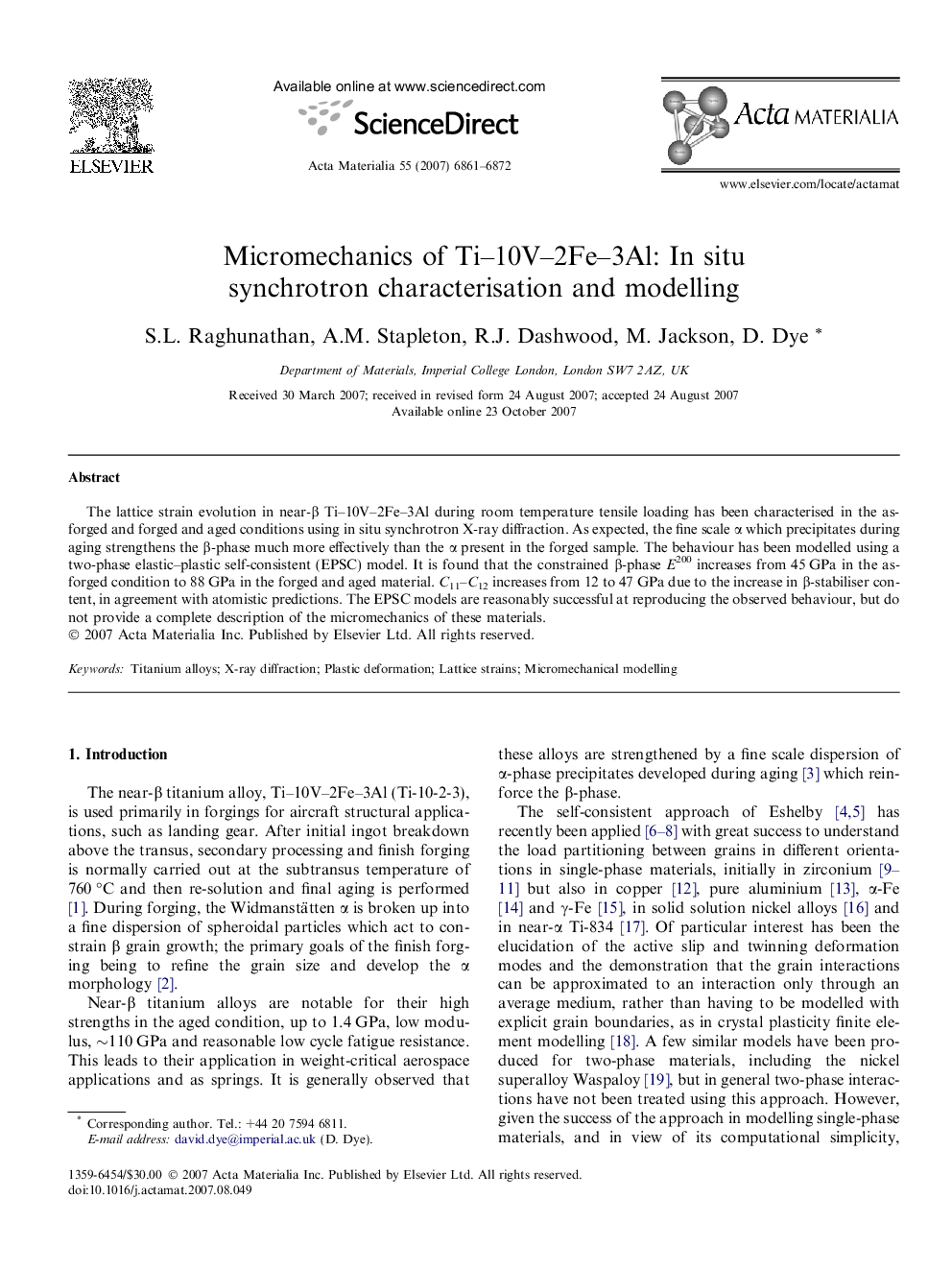| Article ID | Journal | Published Year | Pages | File Type |
|---|---|---|---|---|
| 1449263 | Acta Materialia | 2007 | 12 Pages |
The lattice strain evolution in near-β Ti–10V–2Fe–3Al during room temperature tensile loading has been characterised in the as-forged and forged and aged conditions using in situ synchrotron X-ray diffraction. As expected, the fine scale α which precipitates during aging strengthens the β-phase much more effectively than the α present in the forged sample. The behaviour has been modelled using a two-phase elastic–plastic self-consistent (EPSC) model. It is found that the constrained β-phase E200 increases from 45 GPa in the as-forged condition to 88 GPa in the forged and aged material. C11–C12 increases from 12 to 47 GPa due to the increase in β-stabiliser content, in agreement with atomistic predictions. The EPSC models are reasonably successful at reproducing the observed behaviour, but do not provide a complete description of the micromechanics of these materials.
